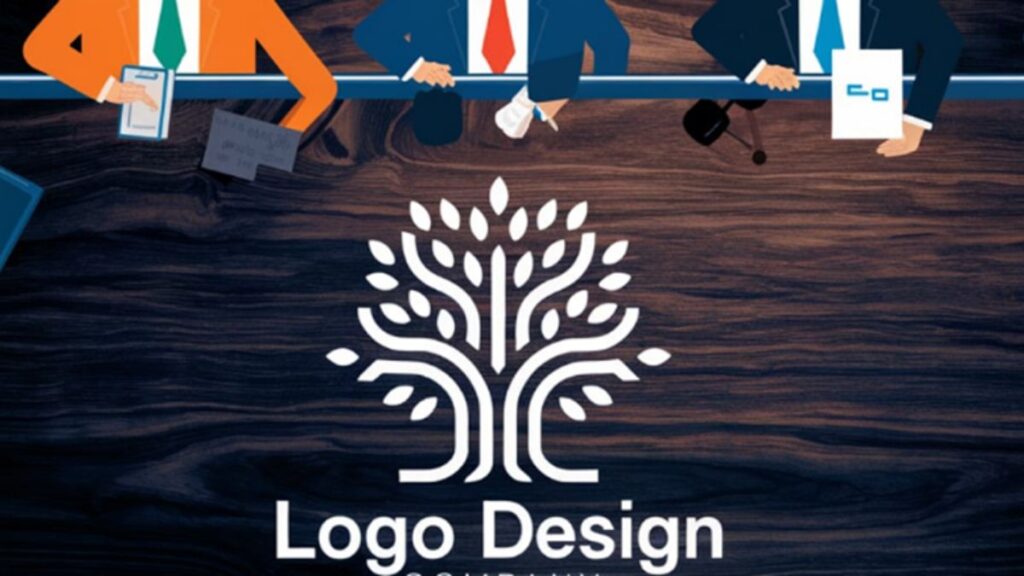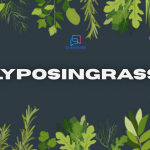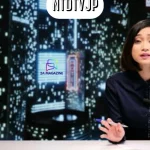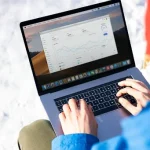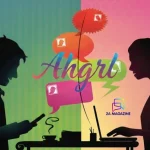A logo is more than just a symbol or a combination of text and visuals; it’s the essence of a brand distilled into a single image. In today’s competitive market, where customers are inundated with choices, having a logo that stands out and resonates with your audience is crucial. Modern logo design is no longer just about aesthetics—it’s about communicating your brand’s values, culture, and uniqueness. In this article, we’ll explore what’s trending in logo design today, how the landscape has evolved, and how much it costs to create a logo that truly represents your brand.
Why Logo Design Matters More Than Ever
Logos are pivotal to creating brand awareness. In a fast-paced, digital world, where first impressions are formed in mere seconds, having a memorable logo can make or break a brand’s visibility and recall.
- Brand Differentiation: A distinct logo sets you apart from competitors, showcasing your brand’s personality.
- Customer Connection: Well-designed logos foster emotional connections, building trust and loyalty over time.
- Consistency Across Platforms: As brands expand their online and offline presence, having a versatile logo ensures consistency in messaging.
A compelling logo gives customers a sense of what to expect from your brand and keeps them coming back.
The Impact of a Logo on Brand Identity
A logo isn’t just a pretty picture. It’s an emblem that represents the essence of your business and communicates who you are at a glance.
- Visual Identity: Your logo anchors your brand’s visual identity, influencing all other design elements like color palettes, typography, and web design.
- Recognition: Over time, customers come to associate your logo with your business’s values and promises, enhancing brand recognition.
- Trust and Credibility: A well-crafted logo signals professionalism, making your business appear more trustworthy and credible.
When a logo successfully aligns with a brand’s identity, it strengthens brand loyalty and can even impact customer decision-making.
First Impressions: Why Your Logo is Your Brand’s Face
Your logo is often the first interaction a potential customer has with your brand. This first impression is critical—studies show that users form an opinion about your brand within seconds of seeing your logo.
- Instant Communication: A logo must convey the essence of your business instantly. Whether you offer cutting-edge tech services or artisanal products, your logo should reflect that.
- Memorability: The best logos are simple yet impactful, making it easier for customers to remember your brand.
- Positive Association: A well-designed logo can evoke positive emotions, influencing how customers feel about your brand before they even engage with your product or service.
The Evolution of Logo Design Trends
Over the decades, logo design has transformed from intricate, detailed illustrations to sleek, minimalistic designs. Changes in technology, consumer preferences, and brand strategies have all influenced these shifts.
How Logos Have Changed Over the Years
From the ornate logos of the early 20th century to the bold, minimalistic designs of today, logos have evolved to match cultural and technological trends.
- Vintage to Modern: Early logos often featured detailed illustrations, while today’s designs are cleaner and more versatile.
- Flat vs. Dimensional: In the early 2000s, logos embraced 3D effects and shadows, but the rise of flat design has taken over, simplifying logos for digital use.
- Cultural Influence: Globalization and social movements have also influenced logo designs, making them more inclusive and representative of diverse audiences.
The Influence of Technology on Logo Design
Technology has significantly shaped modern logo design. As digital platforms evolve, logos need to adapt for readability, scalability, and responsiveness.
- Scalability for Digital Platforms: Logos now need to look good on everything from a website favicon to a billboard.
- Vector Graphics: Designers use vector-based tools to create logos that can be resized without losing quality.
- Animation Capabilities: Animated logos are becoming popular, particularly in digital marketing, where motion captures attention.
What’s Popular in Logo Design Right Now
Modern logo design trends prioritize simplicity, adaptability, and creativity. Below are some of the most popular trends dominating the design space today.
Minimalism: The Power of Simple Design
Simplicity is key in contemporary logo design. Minimalism strips away unnecessary details, allowing the logo to be versatile and easily recognizable.
- Less is More: Minimalist logos focus on clarity and impact. By reducing elements, the design becomes more memorable.
- Scalability: Simplified designs translate well across various formats, whether printed on a business card or displayed on a large screen.
- Timelessness: A minimal logo doesn’t get outdated as quickly, making it a sustainable choice for long-term brand identity.
Bold Colors and Gradients: Adding Depth and Vividness
Color is one of the most striking elements of logo design. Bold, vibrant hues are in vogue, often combined with gradients for a dynamic, multi-dimensional effect.
- Eye-Catching Designs: Bright colors make logos pop, grabbing attention in a crowded marketplace.
- Gradient Usage: Gradients add depth, dimension, and a modern feel to logos, especially when combined with minimalistic shapes.
- Psychological Impact: Each color evokes certain emotions—reds can signify passion, while blues often represent trust.
Custom Typography: Unique Fonts as a Branding Tool
Bespoke typography is becoming an essential tool in logo design, allowing brands to stand out with a typeface tailored specifically to them.
- Brand Distinction: A custom font ensures that no other brand has the same look, adding a unique touch to your logo.
- Emotion Through Type: The style of the typeface (serif, sans-serif, script) conveys different brand personalities, from elegant to approachable.
- Consistency in Branding: Using the same typography across all branding elements maintains consistency and enhances brand recognition.
Geometric Shapes and Abstract Elements
Geometric and abstract shapes offer a sleek, modern look and can communicate various ideas without being too literal.
- Versatility: Geometric shapes are clean, simple, and can be easily adapted to different formats and styles.
- Symbolism: Shapes often carry symbolic meanings—circles for unity, squares for stability, triangles for innovation.
- Balance and Symmetry: Geometric logos are aesthetically pleasing, offering a sense of balance and professionalism.
Responsive Logos: Adapting to Different Platforms
With the proliferation of digital platforms, logos must now be responsive—meaning they can adjust and still look great across different screen sizes and media.
- Flexible Design: A responsive logo can shrink or expand, ensuring it remains readable and recognizable whether viewed on a smartphone or desktop.
- Multi-Platform Consistency: Logos should maintain their integrity across various mediums, from social media icons to website headers.
- Modular Design: Some logos come with adaptable elements that rearrange or simplify for different contexts, ensuring consistency without sacrificing impact.
Retro and Vintage Designs: A Nostalgic Appeal
Retro logos, inspired by designs from past decades, offer a nostalgic, timeless aesthetic that appeals to consumers seeking authenticity.
- Old-School Charm: Vintage designs evoke a sense of history, craftsmanship, and trust.
- Handcrafted Aesthetic: Retro logos often feature hand-drawn elements or vintage typography that give brands a personal, artisanal feel.
- Cultural Connection: Tapping into a past era can create an emotional connection, especially for brands in industries like fashion, food, or entertainment.
Animated Logos: Bringing Your Brand to Life
Animation adds a dynamic, interactive element to logos, especially in digital contexts. An animated logo can capture attention and add personality to your brand.
- Increased Engagement: Animated logos are visually stimulating, making them more engaging on social media or video content.
- Storytelling: Motion can convey a brand’s story or values in a matter of seconds, enhancing the overall brand narrative.
- Tech Savvy Image: Brands that use animation are often perceived as modern and forward-thinking, appealing to younger audiences.
Industry-Specific Logo Trends
Logo design isn’t one-size-fits-all. Each industry has unique trends that resonate with its specific audience. Let’s dive into some of the key trends in various sectors.
Tech and Startup Logo Trends
The tech world favors clean, modern, and often minimalist logos that convey innovation and forward-thinking.
- Simple Shapes and Lines: Tech companies often opt for sleek, geometric designs that suggest efficiency and sophistication.
- Color Palettes: Blues and greens dominate tech logos, symbolizing trust and growth, though more vibrant, unexpected colors are also emerging.
- Minimalism: Many tech logos focus on scalability and simplicity, ensuring they translate well across digital platforms.
Fashion and Beauty Logos: Sleek and Chic Designs
Fashion and beauty logos are often elegant, with a focus on luxury and style. They need to appeal to aesthetics-driven audiences while remaining versatile across packaging, print, and digital platforms.
- Sophisticated Typography: Fashion brands often use custom or elegant fonts that evoke luxury and refinement.
- Monochrome Palettes: Black and white logos are popular in high-end fashion, as they convey timeless elegance.
- Unique Icons: Iconography is critical, with fashion logos often featuring custom illustrations or symbols.
Food and Beverage Logos: Crafting Mouth-Watering Visuals
In the food and beverage industry, logos need to be appetizing and eye-catching, while reflecting the brand’s quality and ethos.
- Bright, Inviting Colors: Food brands often use warm colors like red, yellow, and orange to evoke feelings of hunger and happiness.
- Handcrafted Aesthetic: Logos for artisanal or farm-to-table brands often have a handmade, rustic feel, signaling authenticity and quality.
- Playful Elements: For casual dining or fast food, playful, fun designs are common to create a friendly, approachable brand image.
Health and Wellness Logos: Clean and Calming Aesthetics
Health and wellness logos focus on simplicity and calm, evoking feelings of trust and relaxation.
- Natural Elements: Many logos in this sector incorporate symbols of nature (leaves, water) to suggest health and vitality.
- Soft Colors: Green and blue are dominant, as they promote feelings of tranquility and wellness.
- Minimalist Designs: Clean, uncluttered designs mirror the ethos of wellness—balance, calm, and clarity.
What Affects the Cost of a Logo Design?
Several factors influence the cost of a logo design, ranging from the designer’s experience to the complexity of the design.
Designer Experience: From Freelancers to Top Agencies
The experience level of your designer plays a significant role in pricing.
- Freelancers: Freelancers offer affordable rates, but the quality and consistency may vary.
- Agencies: Design agencies are more expensive but offer a team of professionals and often provide a more polished, well-rounded design.
- Portfolio Quality: Designers with a strong portfolio and proven results often charge a premium for their services.
Complexity of the Design: Simple vs. Intricate Logos
The more complex the design, the more time and resources are required to create it.
- Simple Designs: Minimalist logos are typically more affordable since they require fewer revisions and less design time.
- Detailed Logos: Intricate designs with custom illustrations, detailed typography, or multiple revisions are more expensive due to the time involved.
Number of Revisions: How Edits Impact the Final Price
Revisions play a major role in determining the final cost of a logo.
- Initial Concept: Most designers include a set number of revisions in their package.
- Additional Changes: Extra revisions often come at an additional cost, especially if they involve significant design alterations.
- Clarity from the Start: Providing clear direction from the outset can reduce the need for revisions, saving both time and money.
Additional Branding Elements: More Than Just a Logo
Some businesses may require more than just a logo—they may need an entire visual identity system.
- Brand Guidelines: Detailed guidelines ensure consistency across all branding materials, but they come with additional costs.
- Stationery and Collateral: Business cards, letterheads, and other branding materials may also be included in a more comprehensive package.
- Digital Assets: Logos designed for social media platforms, websites, and apps may come with extra charges for optimization.
How Much Does a Logo Design Typically Cost?
The cost of a logo design varies widely based on factors like designer experience, project scope, and the platform used to source the design.
The Average Price Range: From Budget to Premium
Logo design prices range from a few dollars to several thousand, depending on where you look.
- Budget-Friendly Options: DIY logo makers and online marketplaces like Fiverr offer designs for as little as $5 to $100.
- Mid-Range: Freelancers and small agencies typically charge between $300 to $2,500 for a logo design.
- High-End: Top-tier design agencies can charge anywhere from $5,000 to $50,000 or more for a comprehensive logo and branding package.
Freelance Designers: Affordable but Hit or Miss
Freelancers often offer a more affordable option, but the quality can vary dramatically based on their experience and expertise.
- Cost-Effective: Freelancers usually charge lower rates due to lower overhead costs.
- Flexibility: Freelancers often provide more personalized attention and can accommodate revisions more easily.
- Varied Quality: The quality of work can be inconsistent, so it’s important to thoroughly vet the designer’s portfolio and client reviews.
Design Agencies: High-End but Comprehensive Services
Design agencies offer a premium service, providing not just a logo but an entire brand strategy.
- Collaborative Team: Agencies have teams of designers, strategists, and marketers working together to ensure a cohesive design.
- Polished Results: Agencies often deliver more refined and well-thought-out logos due to their collective expertise.
- High Cost: These services come at a premium, but they are ideal for larger businesses looking for a comprehensive branding solution.
Online Logo Makers: Quick and Cheap but Limited
Online logo makers like Canva and Tailor Brands offer a low-cost, fast solution, but they come with limitations.
- Affordability: These platforms are extremely budget-friendly, often offering designs for under $100.
- Quick Turnaround: You can create and download a logo in minutes, making them perfect for startups or businesses on a tight deadline.
- Lack of Originality: These platforms often use pre-made templates, so your logo may not be unique, and others may use similar designs.
The Importance of a Well-Designed Logo
A well-crafted logo is more than just a design—it’s an investment in your brand’s future.
Spending time and resources on a quality logo can yield long-term benefits for your business.
- Increased Brand Recognition: A memorable logo increases brand awareness and customer recall, helping your business stand out in a crowded marketplace.
- Consistency Across Channels: A well-designed logo can be easily adapted for various platforms and materials, ensuring brand consistency.
- Longevity: Investing in a timeless design can save you the cost of frequent redesigns, as well as the risk of confusing your audience with brand changes.
How a Professional Logo Enhances Brand Trust and Loyalty
A professional logo can help build trust with your audience, making your brand appear more credible and reliable.
- First Impressions Matter: A well-designed logo can immediately communicate professionalism and attention to detail.
- Customer Loyalty: When customers trust your brand, they are more likely to return and recommend your business to others.
- Brand Authority: A strong, consistent logo helps establish your brand as an authority in your industry, leading to greater customer trust and engagement.
DIY vs. Hiring a Professional Designer
Deciding between designing your own logo or hiring a professional can be a difficult decision.
Pros and Cons of Designing Your Own Logo
Creating your own logo can save money, but it may not always be the best choice for your brand.
- Affordability: DIY options are often more affordable, making them a popular choice for startups and small businesses with limited budgets.
- Creative Control: You have complete control over the design process, allowing you to create a logo that perfectly aligns with your vision.
- Lack of Expertise: Without a background in design, creating a professional-looking logo can be challenging, and the final result may not meet industry standards.
Why Professional Designers Provide More Value
Hiring a professional logo designer may be more expensive, but the value they bring to the table is often worth the investment.
- Expertise and Experience: Professional designers have the skills and experience needed to create a logo that is not only visually appealing but also effective in conveying your brand’s message.
- Strategic Approach: Designers take a strategic approach to logo design, ensuring that the final product aligns with your brand’s goals and target audience.
- Time-Saving: Hiring a professional designer allows you to focus on other aspects of your business, while they handle the creative work.
How to Choose the Right Designer for Your Logo
Choosing the right designer for your logo is a crucial step in ensuring that your brand is represented effectively.
Questions to Ask Before Hiring a Logo Designer
Before hiring a designer, it’s important to ask the right questions to ensure that they are the best fit for your project.
- What’s Your Design Process?: Understanding the designer’s process will give you insight into how they approach logo creation and what to expect during the project.
- Can I See Your Portfolio?: Reviewing the designer’s portfolio will help you determine if their style aligns with your brand’s vision.
- What Are Your Revisions Policies?: It’s important to know how many revisions are included in the design package and how additional revisions will be handled.
What to Look for in a Designer’s Portfolio
When reviewing a designer’s portfolio, there are several key factors to consider.
- Diversity of Work: A strong portfolio should showcase a variety of styles and industries, demonstrating the designer’s versatility.
- Consistency in Quality: Look for consistent quality in the designs, regardless of the client or industry.
- Creative Problem-Solving: The best logos solve a specific branding challenge, so look for examples where the designer has successfully addressed a client’s needs through creative design solutions.
The Future of Logo Design: What to Expect
As technology and design trends continue to evolve, the future of logo design looks exciting.
Emerging Trends That Will Shape the Industry
Several emerging trends are set to shape the future of logo design.
- Adaptive Logos: As brands expand their digital presence, logos that can adapt to different platforms and contexts will become increasingly important.
- Sustainable Design: With a growing focus on sustainability, we may see more eco-friendly design choices, such as logos that use minimal resources and promote environmental consciousness.
- Inclusive Design: As brands strive to be more inclusive, logo designs that reflect diversity and inclusivity will become more prevalent.
How AI is Influencing the Future of Logo Design
The role of Artificial intelligence in logo design is playing an increasingly important for the world of logo design, offering new possibilities and challenges.
- AI-Powered Design Tools: AI-driven tools can help designers create logos more efficiently, streamlining the design process and reducing costs.
- Customization at Scale: AI allows for the creation of highly customized logos, tailored to specific audiences and use cases.
- Balancing Automation and Creativity: While AI can assist with certain aspects of the design process, human creativity and intuition will remain critical for creating truly unique and impactful logos.
Conclusion
Investing in a well-designed logo is one of the most important decisions a business can make. Whether you choose to create a minimalist design, incorporate bold colors, or opt for a custom typography-driven logo, the right design will serve as the foundation of your brand’s identity. While the cost of a logo can vary widely depending on factors like designer experience and design complexity, the long-term benefits of having a professional, impactful logo far outweigh the initial investment. A well-crafted logo not only enhances brand recognition and trust but also sets the stage for lasting success in a competitive market.

